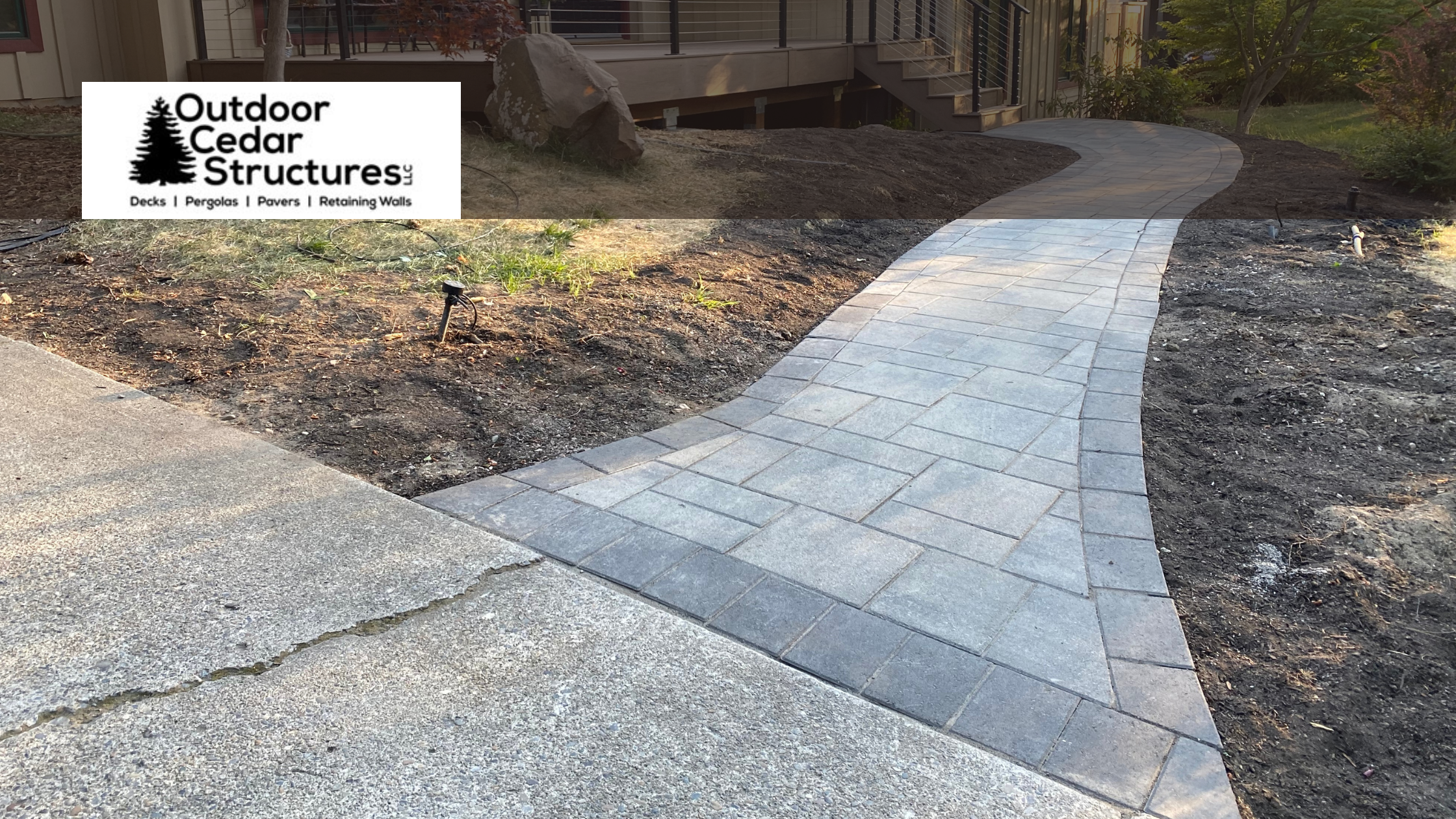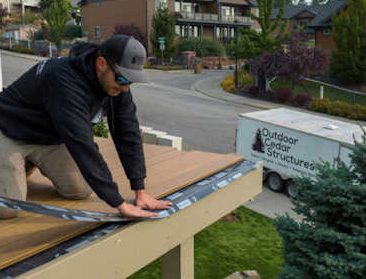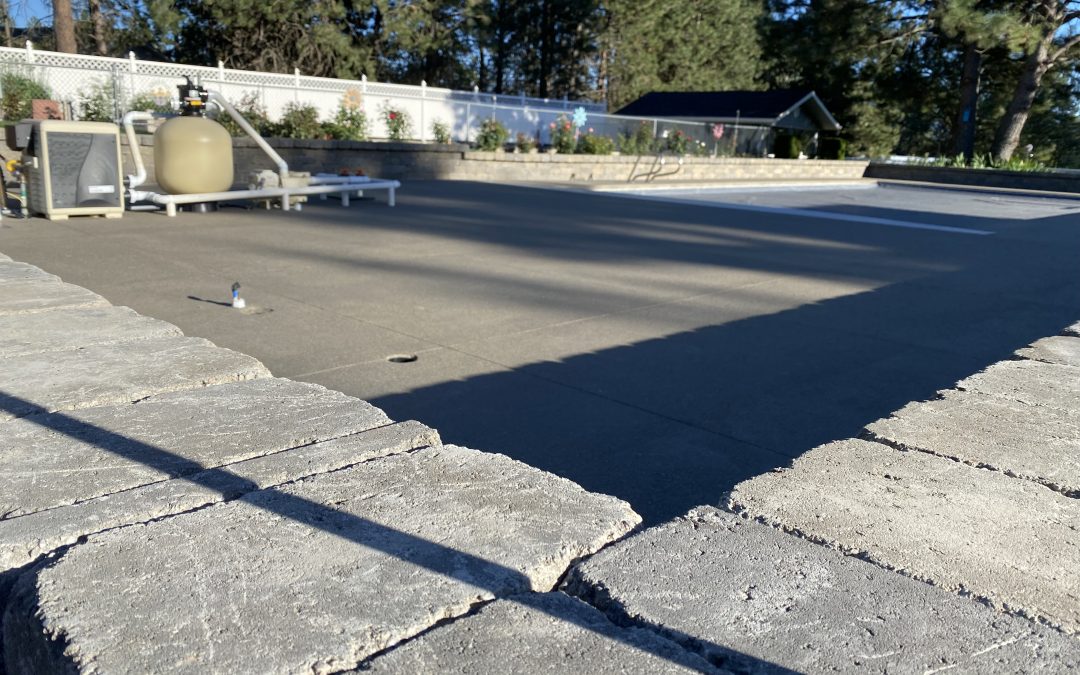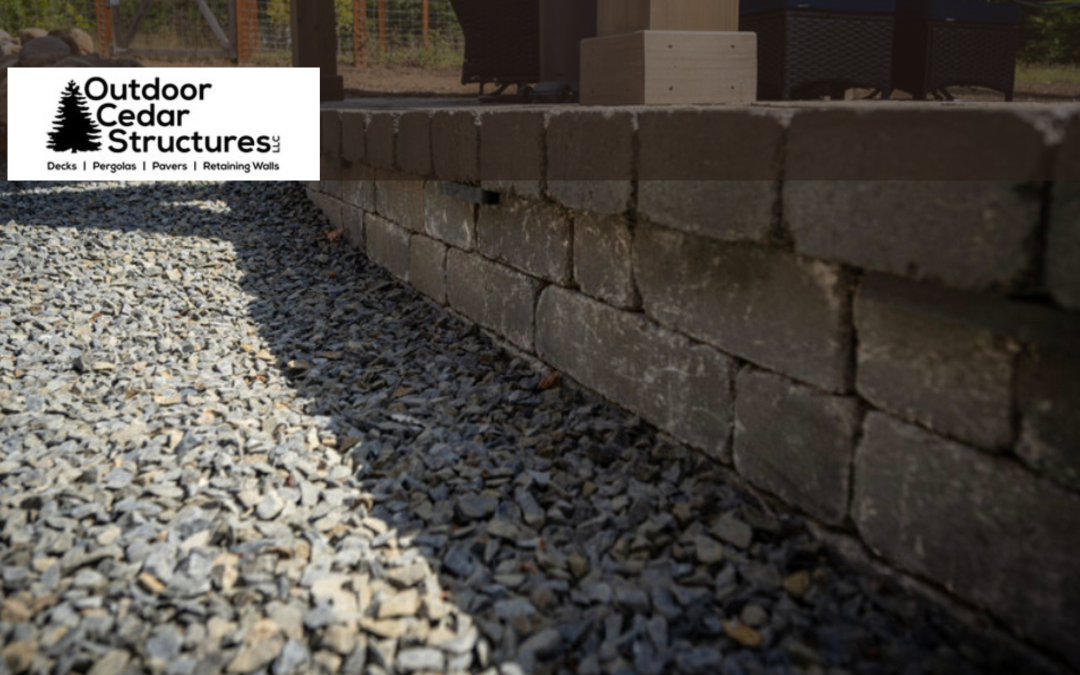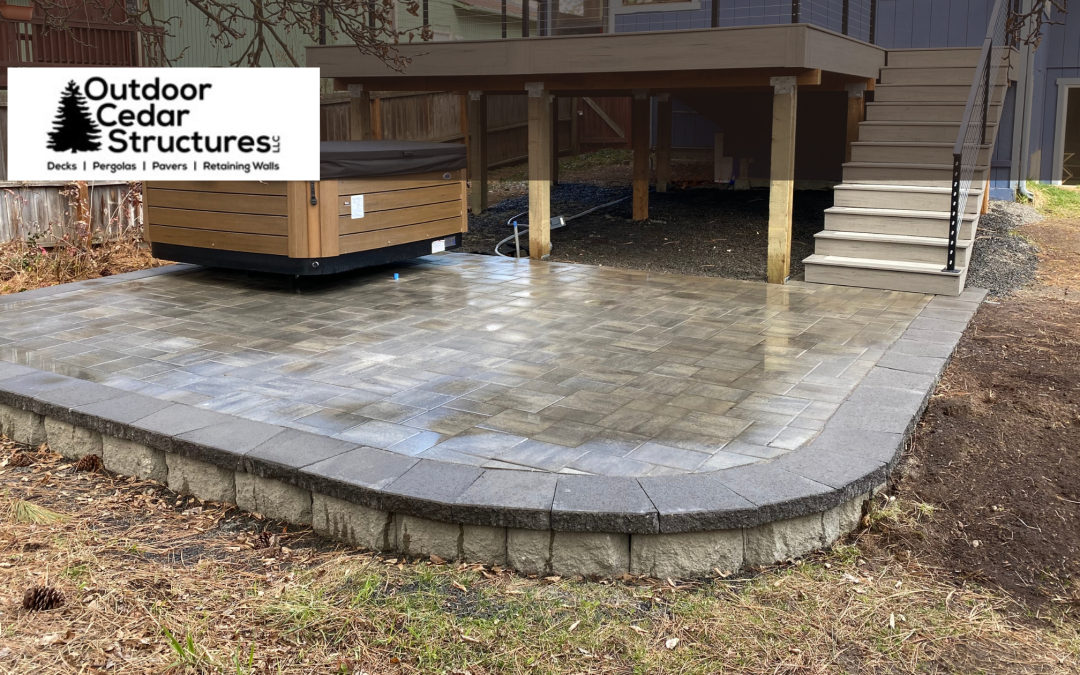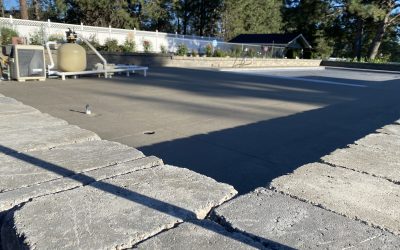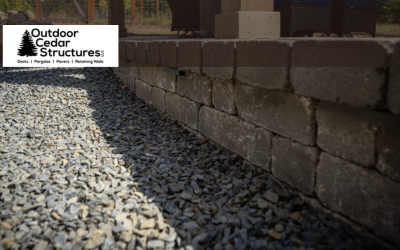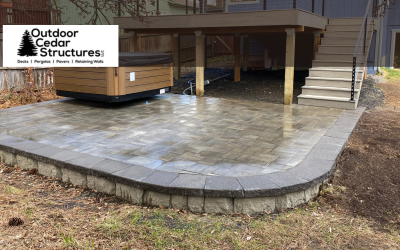A beautiful and functional paver patio or driveway starts with a solid foundation like anything built to endure. At Outdoor Cedar Structures, we have the skills and tools to create the perfect base for your porcelain or concrete pavers.
Our methods reduce the chances of cracking and unevenness, which are common problems caused by a poorly installed base on unprepared terrain.
We recommend hiring professional installers for optimal results, but proper research will empower you with the knowledge to make informed decisions for your project. Let’s dive into the critical steps for creating a perfect paver base!
Tip #1: Excavate.
Excavate the topsoil from where you want to install the concrete pavers. It’s ideal to dig down to the subsoil or clay. If your subsoil is new fill due to recent construction, compact it thoroughly with a walk-behind compactor before adding gravel. This ensures a solid foundation for your paver base. You can directly place the gravel base layer if the subsoil hasn’t been disturbed or recently filled.
To determine the total depth you need to excavate, add the thickness of your concrete pavers, 1 inch for bedding sand, and any necessary gravel specific to your project.
Tip #2: Create an aggregate base layer.
The strength of your concrete pavers base comes from the aggregate layer, typically made of crushed gravel in various sizes (¾ inch to dust-like particles). It is suggested to add:
- 4 to 6 inches of the material for walkways and patios.
- 8 to 12 inches for driveways.
In areas with heavy clay subsoil, it’s suggested to add a geotextile underlayment. This woven fabric will keep the aggregate from mixing with the soil, especially for driveway applications.
If you live in a region with freeze-thaw cycles (like our neighbors in the Spokane and Coeur d’Alene area), you may need additional base material to account for these conditions.
Rake everything evenly after placement but be sure to pitch the gravel away from your house so it doesn’t obstruct water runoff. To accommodate that, it only requires a slope with a 1/8” to 1/4″ drop per linear foot.
Tip #3: Use a plate compactor.
Use a plate compactor with at least 5,000 lbs of force. You must rent one unless you have your plate compactor (most homeowners don’t!). Of course, if you hire experienced professional paver installers, they’ll come equipped with all the necessary machinery.
The key to proper compaction is not trying to do too much at once! Work in lifts — compacting the gravel in sections of 4 to 6 inches at a time — to prevent unevenness.
Tip #4: Add the bedding layer.
Now that you have a solid compacted base, it’s time for the bedding sand layer. Grab two 1-inch-diameter pieces of PVC pipe or metal conduit. Lay them on the compacted gravel, and use a 2×4 board as a straightedge to screed the sand smooth.
As you move the 2×4 back and forth, keep pushing the pipes down to maintain level. Fill any low spots with sand using a trowel.
Tip #5: Consult the experts.
Do you need more tips or site-specific designs? Don’t hesitate to contact professionals like our team here at Outdoor Cedar Structure. We specialize in installing Belgard pavers, so we’re qualified to offer tailored advice and assistance with installation using their products.
You might also consult a seasoned geotechnical or civil engineer for ideas on flexible segmental pavement designs and share them with us so we can work closely with you and plan your project accordingly.
Dealing with overlays: How to install concrete pavers over existing concrete
Does your project involve installing concrete pavers on existing concrete? We recommend using Belgard porcelain pavers or other thin concrete pavers.
These are generally safe to place over new or existing concrete slabs. Ensure the slab is at least 4” thick and can handle 4,000 psi. You just need a dry mud set or sand-setting bed.
Dry mindset (similar to tile adhesive) provides a permanent water-activated bond ideal for high-traffic areas. If you prefer some flexibility, sand can be a practical option, but install edging restraints to confine the sand and prevent shifting over time.
Here’s an expert tip: Before installation, make sure the distance from the doorsill and the top of the slab can accommodate the setting bed thickness and prospective paver.
Use small grinding equipment if the concrete cannot handle the new overlay material’s thickness. If you have at least 4”, remove some of the existing concrete’s top layer or cut and remove it near the transition before re-pouring it at a lower height.
Are you building in a freeze-thaw zone? In this case, be sure to include additional height to accommodate heave moment in our height calculation.
The concrete slab must be 4” to 6” thick, while heavier vehicles like travel trailers, RVs, and trucks must be considered to determine the suitable concrete base and internal reinforcement.
Perfect your paver base with Outdoor Cedar Structures
Schedule a free design consultation with us here at Outdoor Cedar Structure and allow us to take the guesswork out of installing the perfect paver base. Leave us a message or call (509) 329-6054.

